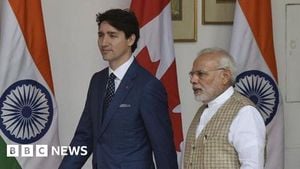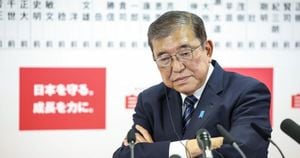India's economic narrative is ever-evolving, drawing attention as the budget for 2023 prepares to be unveiled. This year, the focus is not merely on numbers or forecasts but on human stories—especially the recent passing of eminent economist Bibek Debroy, who played a significant role in shaping India's financial strategies and policies.
Budget 2023 is set against the backdrop of rising inflation and global uncertainty, which significantly impacts everyday Indian lives. With the economy gradually recovering from the pandemic's fallout, investors and citizens alike are watching closely as the government prepares to address pressing issues. How will it tackle the challenges posed by soaring prices of essentials and sluggish income growth? The anticipation builds as experts weigh in on possible allocations, targets, and reforms.
At the heart of this discourse is Bibek Debroy, known for his visionary approach to economic planning. Debroy, who served as the Chairman of the Prime Minister’s Economic Advisory Council, was not only recognized for his intellectual prowess but also for his ability to communicate complex economic ideas simply. His passing has left many pondering the future of economic policy direction, particularly as the budget aims to balance growth and sustainability.
For many, Debroy’s legacy is deeply interwoven with the economic reforms initiated during key transitions over the last few decades. He was instrumental not just academically but pragmatically, advocating for reforms aimed at simplifying regulations and enhancing the ease of doing business. His strategies often highlighted the importance of integrating traditional sectors with modern practices.
Despite challenges, the upcoming budget seeks to fortify India’s position as one of the fastest-growing major economies. Finance Minister Nirmala Sitharaman is poised to address several pivotal themes, including continued infrastructure investment and social welfare programs. Will this budget reflect Debroy’s ideals of inclusivity and depth via expansive measures targeting rural development?
The intersection of policy and practice has never been more relevant. Ahead of the budget announcements, economic growth rates, which clocked around 8.7% last year, indicate some resilience. Yet concerns linger—how will the government maintain this momentum against the backdrop of geopolitical tensions and inflationary pressures? Her strategy may involve incentivizing sectors like manufacturing and technology, including potential tax reforms aimed at boosting domestic production.
Meanwhile, as part of the budget discussions, the impact on agriculture is unmissable, particularly with the backdrop of climate concerns and fluctuated yields. Farmers, facing the heat from both the economic climate and erratic weather, are anxious about potential support measures. Budget allocations for agriculture could significantly affect their livelihoods and food security.
What’s more, there’s speculation about how the tax structure might evolve. The idea of simplifying the Goods and Services Tax (GST) has been on the table for some time—a reform Debroy had ardently advocated for, favoring fewer slabs and combating compliance burdens.
The intricacies of budgeting extend beyond mere accounting; they affect millions of lives, shaping the social contract between the government and its citizens. And with Debroy’s influence still looming large, the message he leaves behind could resonate through the corridors of power, reminding policymakers of their duty to balance the top-down strategy with grassroots reality.
While the government has showcased optimism about the recovery path, including ambitious healthcare spending and digital initiatives, the practicality of these measures will be put to the test. It’s actionable details, not just good intentions, which matter for long-term stability. Citizens are left wondering: How effectively will their needs be integrated within government frameworks?
Perhaps the most pressing question as the budget approaches is: will it manage to encapsulate Debroy’s methodical yet visionary thinking? His belief was rooted deeply in analytics, proposing policies backed by data-driven insights—often advocating for stakeholder engagement at all levels. This model becomes terribly significant as the budget planning enters its final stages.
Stakeholders from various sectors are gearing up to lend their voices to this dialog, crafting proposals meant to ignite discourse around growth paradigms and empirical studies on human development. The budget opens the floor for innovators and traditionalists alike to present ideas, proving how multifaceted economic revitalization can be.
With each passing day, the expectation for Budget 2023 grows, glancing over the horizon of what India’s economic future holds. It’s about creating pathways where citizens can thrive, bridging aspirations with feasible realities. Although Bibek Debroy will be missed, his influence on India's economic narrative remains, serving as both inspiration and calling for renewed commitment to progressive growth.
The upcoming budget will likely set the stage for how India navigates these turbulent times and whether it remains on target to realize the long-term vision—a subject of urgency and importance. Keeping all parties engaged and involved is as pivotal as the figures presented on paper. It'll be interesting to see if policymakers rise to this occasion, taking cues from Debroy's life work and weaving them effectively throughout the fabric of the nation's budgetary plans, ensuring every Indian has the chance to partake in this promised growth.



